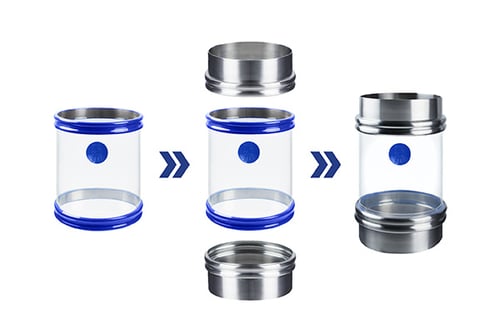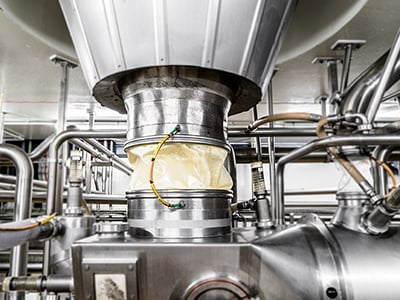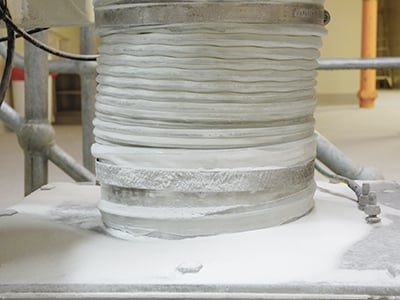Everything you need to know about installing a BFM® fitting system.
What is a BFM® fitting?
- BFM® fitting System
- How is it used?
- Where is it used?
Everything you need to know about installing a BFM® fitting system.

Keep your people and plant safer with the 100% sealed,
explosion-resistant flexible connector system.

There's no clamps. No screws. No fuss.
You can replace snap-fit BLUEBAND™ connectors
easily in under 30 seconds.

A BFM® fitting comprises a unique snap-in BLUEBAND™ flexible connector that sits between two specially formed steel spigots welded to an inlet and outlet in a process line.
Together, the system eliminates the problems associated with old-fashioned clamp-style flexible connectors.


Anywhere there is bulk product being transported from one part of a process to another, you can find a BFM® fitting.
It's especially suited for transitions between stationary and moving equipment, like sifters, sieves and vibratory tubes, but can also be used through metal detectors, at the base of hoppers and anywhere you need access to or visibility of your product flow.


Every bulk processing industry needs flexible connectors to transport its product through different stages of a production line.
Today, BFM® fittings are the trusted flexible connector for global manufacturers in the food, chemical, pharmaceutical and mineral industries around the world.


Powder leaks through clamps
Difficult to fit, variations & inaccuracies
Overpressure causes high-risk clamp failure
Frequent downtime for replacements, clean-ups

More durable material, quick change overs and less downtime.
From metal detectors to sifters, high pressure or vacuum, BFM® fitting connectors are used in a huge range of industrial applications.
We pride ourselves in meeting global certifications across food safety, explosion and materials, making us the product of choice around the world.
BFM® fitting inventor, Blair McPheat, explains:
“I was visiting plants selling filtration products and was constantly seeing the issues manufacturers were having with dust leakage around their flexible connections.”
“The downtime involved for clean-ups and refits was costing a lot in lost production,” said McPheat. “I knew there had to be a better way.”
Watch the video to find out why his creative solution to an age-old problem has been embraced by leading manufacturers in the food, pharmaceutical, chemical and mineral industries around the globe.